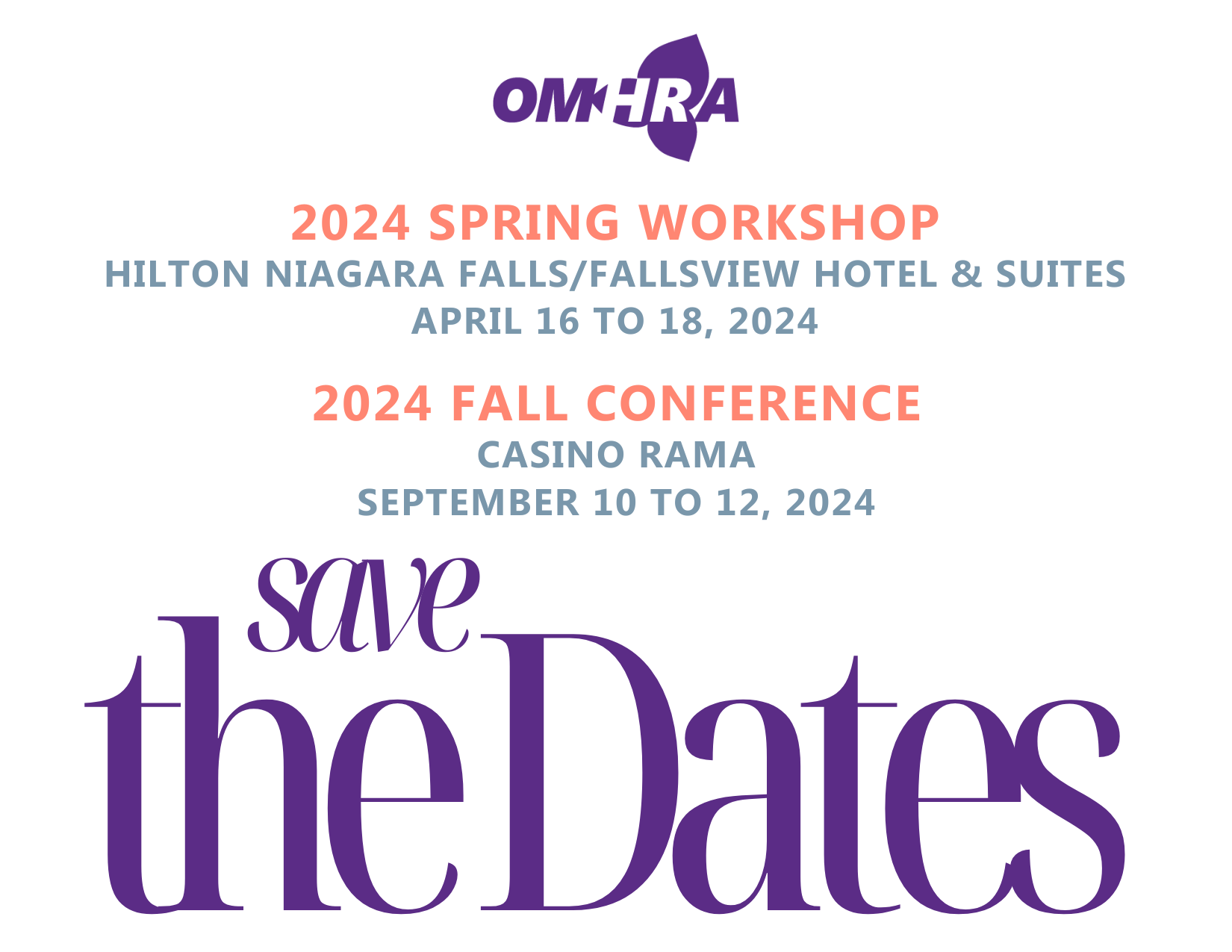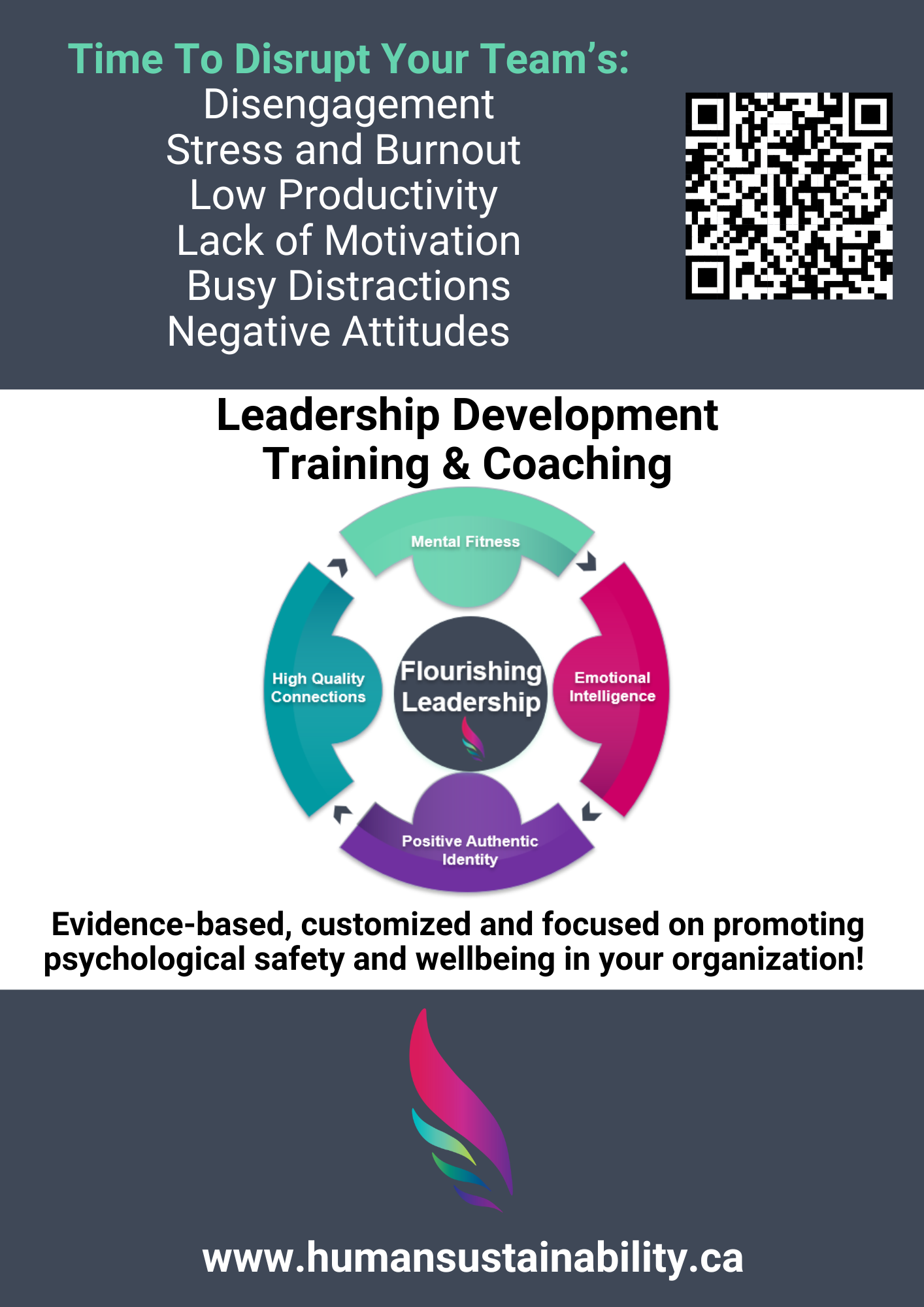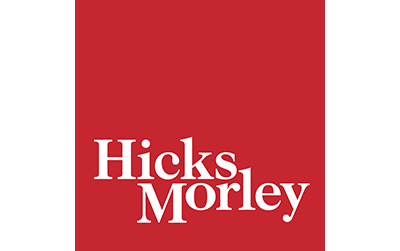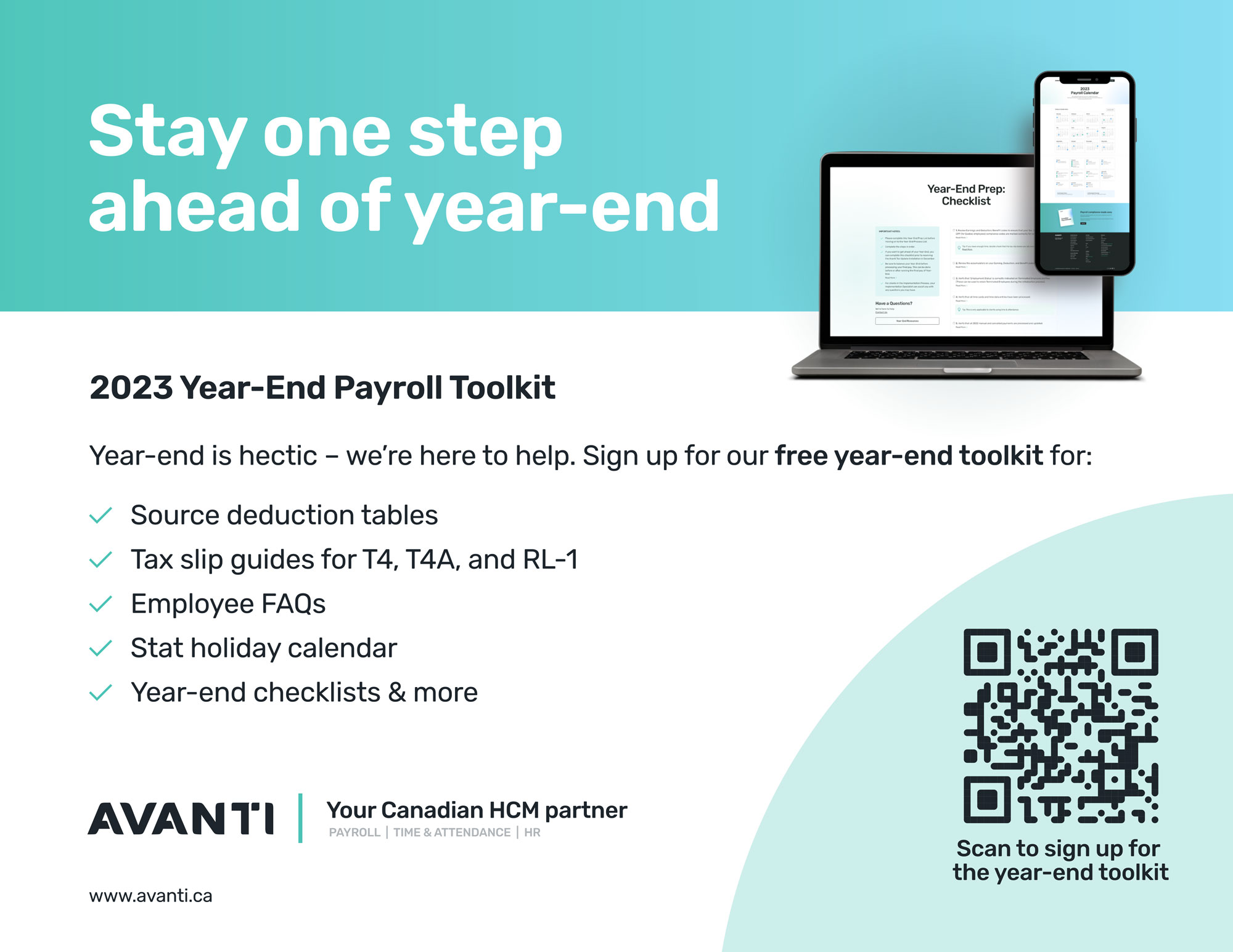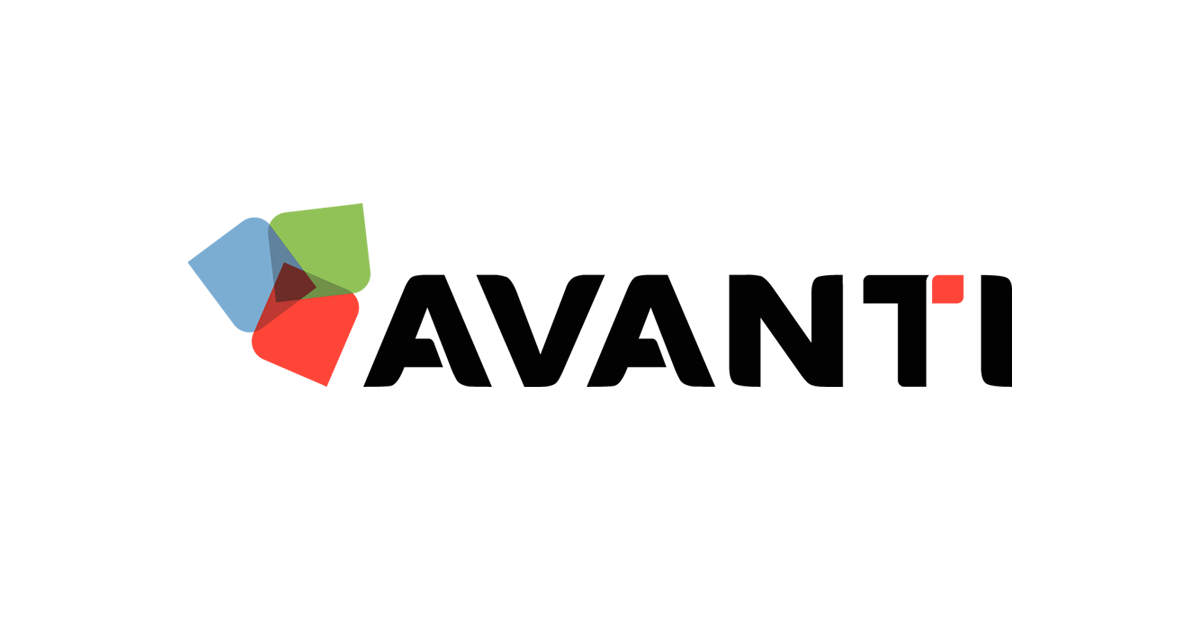
Issue #9 – NOVEMBER 2023
HR Navigator is published the last Friday of each month

This month our theme is “workplace restoration”, which focuses on how a municipality responds to conflicts that may arise and how situations are handled when a major event or investigation occurs. I experienced this challenge first-hand when the City’s outside workers went on strike for five weeks in the winter of 2021. Once the strike was over, it took many months to restore a culture of collaboration and understanding.
One of the most important actions we can take when it comes to workplace restoration is open dialogue. Providing a platform for employees to express concerns is essential. Equally, it’s important their concerns and feedback is actually listened to, and that it’s not a culture of us versus them. Communications need to be all-encompassing and all employees need to receive a consistent message. An open-door policy for employees to approach their Managers/Supervisors, and team-building exercises are additional actions that can be helpful. Sometimes bringing in someone from the outside to communicate between the two parties may be helpful to resolve issues that either party may be holding onto. A different perspective is very helpful sometimes.
We must always remember that actions speak louder than words, especially in the early days of restoring trust. Honest two-way dialogue, together with a healthy dose of empathy, professionalism and sustained commitment can serve to re-build trust and re-establish a healthy workplace.
Speaking of words and actions, this month we conducted a comprehensive member feedback survey designed to solicit your feedback to help shape our actions for 2024 and beyond. Thank you so much to all those who provided your feedback. We are still analyzing the responses but we plan to provide you with a synopsis of the feedback in a future communication.
In the meantime, I’m happy to announce that the winner of the iPad is Kim Berry of Selwyn Township. OMRHA staff will be in touch shortly to arrange for shipping.

Lori Bolton, President

Workplace Restoration – What is it and when should we use it?
What is Workplace Restoration?
Workplace Restoration is gaining more attention as an effective HR tool, but what is it and when should it be used? Workplace Restoration can be defined in different ways but at its core, it is a means of establishing or re-establishing harmonious working relationships and civility between individuals and/or within teams. Workplace Restoration is most often used following incidents or formal complaints and investigations of harassment, discrimination, and reprisal, or following other disruptive events in the workplace such as strikes or changes in leadership. Complaints and investigations are very disruptive for everyone involved and should be followed up with some form of ‘after care’ to address the harm they have experienced. When HWR conducts workplace investigations, our reports always include recommendations for restoration, regardless of the findings.
Restorative actions can prevent escalation
Although Workplace Restoration is a very effective tool in response to disruptive events, it is equally effective as a proactive or pre-emptive tool and can be used to address the impact of unresolved conflict, incivility, and toxicity in the workplace before these factors escalate to formal complaints. Employers can effectively manage these issues by identifying the underlying causes and risk factors and addressing them proactively through a range of restorative actions.
Regardless of whether it is implemented as a proactive or reactive measure, the goal of Workplace Restoration should be to:
- establish/build or re-establish a heathy and safe work environment for all by addressing the psychological and emotional harm experienced;
- create a cohesive team environment in which employees and leaders support, encourage and recognize one another;
- promote a healthier workplace environment by improving interpersonal and/or team dynamics; and
- promote trust and confidence in leadership.
Restoration requires planning
Effective Workplace Restoration requires a solid plan. The plan should begin with a clearly defined scope setting out the purpose, goals, and objectives. The scope should be developed with input from stakeholders (including employees) and must be supported and communicated by leaders. The goals of the plan should be tailored to the specific issues and needs of the individuals and work environment targeted by the restorative actions which, in some cases, will be identified through an investigation (if one was conducted).
Using Workplace Assessment to plan for restoration
If you are looking to implement Workplace Restoration as a proactive or pre-emptive measure where no investigation has taken place, the first step should be to conduct a Workplace Assessment. An assessment is not an investigation. It focuses on identifying negative factors in the workplace and the impacts of them on individuals, team, and workplace relationships. Assessments are less confrontational and intrusive than investigations and are more effective than culture or engagement surveys in identifying and supporting restorative actions.
When conducting a Workplace Assessment, we gather information about the needs of the work unit and individuals in it as well as the underlying causes of negative factors in the current environment. We can explore these issues in a confidential, non-confrontational manner. The information gathered is used to create a baseline and informs the specific initiatives to be undertaken through Workplace Restoration. Assessments are conducted using a variety of tools including surveys, confidential one-to-one interviews, focus groups and facilitated discussions, and environmental scans, as well as analysis of past complaints and other relevant HR data.
Resolution-oriented, forward-looking restoration
Effective restoration plans must not only have a clear purpose and scope, but also set out clearly defined, resolution-oriented recommendations for restorative actions. Plans should be designed to address identified issues moving forward not looking back. Restorative actions may include:
- education and/or training for individuals or groups;
- ADR options (including mediation, facilitated discussion, counselling, coaching, healing circles, motivational interviews);
- group/team building activities to improve dynamics;
- performance management and monitoring; and
- operational changes to address identified issues.
The restoration plan should also set out specific timelines for implementation of deliverables; a process for monitoring implementation and addressing issues that arise during the implementation stage; evaluation/assessment of the restoration process and effectiveness of restorative initiatives; and a plan for ongoing follow-up/check-ins with involved parties.
Is Workplace Resolution in your HR toolbox?
So, when should your organization look to engage in Workplace Restoration? Anytime. If your organization seeks to build or restore a psychologically safe, respectful, and inclusive workplace, consider using Workplace Restoration not only in response to disruptive events but also as a proactive or pre-emptive tool to effectively address negative workplace influences before they cause more harm.

The Post-Investigation Environment: Workplace Restoration
Allegations of workplace harassment or bullying can be a challenging issue to deal with in any workplace. Where employees raise allegations of harassment and bullying, an employer has a duty to investigate. In many cases, this results in interviews with the respondent, the complainant, as well as other witnesses. Where allegations are widespread, an employer may end up investigating multiple employee witnesses across the workplace.
While workplace investigations can be helpful, and often are necessary, the issues that led to the investigation may still reverberate throughout the workplace even after the investigation is concluded.
Often, even where an investigation is concluded and discipline is issued, remaining employees may still feel the effects of the harassment.
For example, an investigation conducted into workplace bullying may result in an employer discovering the bullying is far more widespread than initially thought. They may discover that conflict and interpersonal issues still remain in the workplace.
Alternatively, even when an allegation only involves the respondent and complainant, the complainant may still have lingering concerns even after the respondent is disciplined.
At this point, it can be necessary for the employer to engage in a process of workplace restoration.
Workplace restoration is the process of restoring a respectful, healthy, and harmonious work environment following allegations of harassment or bullying.
Restoring the workplace may not be an easy process. Restoration can be challenging and lengthy, particularly where the allegations at issue involve serious and repeated instances of bullying and harassment, and where the allegations are widespread throughout the workplace.
After an investigation is complete, employers may need to determine what will happen to the complainant, the respondent, and witnesses or coworkers.
Generally speaking, both the complainant and the respondent should be made aware of the outcome of the complaint. Depending on the results of the investigation, issues to consider may be:
- Whether to implement the recommendations and/or disciplinary actions and if so, the timing of doing so
- If the complainant and respondent were in an employee/manager relationship, whether they can continue to work together
- If employees cannot continue to work together, what steps can be taken to find a place for both of them going forward
In addition to these more practical issues, employers should also be aware of emotional and mental health concerns impacting employees in the fallout from an investigation:
- Are employees not engaging as they used to?
- Are gossip and rumours running rampant?
- Do employees often look upset or withdrawn?
- Are employees having abnormal outbursts?
All of these could be signs that employees are in need of assistance following the aftermath of harassment or bullying in the workplace.
Best practices for Employers following an investigation is to be aware of these issues in the workplace and Employers should be on alert to check in with their employees and provide supports where needed (i.e., employee assistance program).
In addition, it is important to remind employees of the policies on workplace harassment and bullying and ensure employees are aware of the procedures in place to assist and investigate should further issues arise.
While these principles are helpful in guiding the investigation and workplace restoration process generally, every situation requires an individualized approach based on its own facts. If you are dealing with a novel or particularly sensitive situation, it may be helpful to speak with a Hicks Morley lawyer to ensure you are appropriately addressing the issue at hand.
OMHRA Member Spotlight
Jamie Roach
Human Resource Officer
Porcupine Health Unit (Timmins)
OMHRA Member since February 2022
 What are three adjectives your colleagues would use to describe you?
What are three adjectives your colleagues would use to describe you?
- Knowledgeable, I have a deep understanding of HR practices and procedure.
- Collaborative, I excel working with the team and building positive relationships with colleagues and staff.
- Communicative, I have excellent communication skills, verbal and written and I am a good listener.
If you had to state your three rules of engagement, what would they be?
- Top three ROE, in no particular order, Be Accountable, always. Cultivate empathy and understanding. Strive for personal growth. Bonus would practice gratitude.
Did you have an important early influencer in your life? Could you reflect on their role in shaping you and perhaps preparing you to be a resilient leader?
Early and often would be my mother. She has always supported me and pushed me to be better. She set the bar high in her own professional achievements. She came from nothing, worked full time and completed her degree while raising three kids. After retiring from teaching she packed up and went the U of T to complete a masters and was eventually ordained in the Anglican Church. Professionally, SJ Dowling, she became my boss in 2015 after the company I was working for was purchase and she helped me take my HR skill set to the next level. She remains a friend and mentor today.
What advice do you have for people just beginning their careers in human Resource Management?
Be adaptable and open to change. Cultivate strong interpersonal skills. Develop a diverse skill set beyond specific HR knowledge.
What may surprise your colleagues about you?
I was an accomplished thespian in high school, including winning Outstanding Performance in the Sears Drama Festival. Given my personality this may not surprise them.
Do you have a hobby or non-work-related activity that you think enhances your effectiveness at work?
I run. Not very fast, but I run.
What is your favourite quote?
“Yesterday you said tomorrow” and “If you change the way you look at things, the things you look at change”
What is your favourite work of fiction?
Anything by Ian Rankin. I am in Inspector Rebus junkie.
What book on human resource management should every practitioner read?
The Courage to be Disliked, Fumitake Koga & Ichiro Kishimi (not specifically and HR book but an important book)

60 years of OMERS
Providing pensions for local government employees across Ontario
In 2022, OMERS marked 60 years of providing a secure and stable retirement income to members across Ontario. Over those six decades, the pension industry in Ontario also evolved. Before OMERS was established, most municipalities and local boards in Ontario didn’t provide their employees with pensions.
The early days
The Ontario Municipal Employees Retirement System Act, which created OMERS, was passed in 1962 to provide uniform retirement benefits to members regardless of age, gender, location or occupation, setting a high standard for fairness and inclusivity. By the end of its first year in operation, 311 employers across Ontario had signed on.
In 1966, OMERS contributions and benefits were integrated with the newly created Canada Pension Plan. In 1968, all municipal employees hired after July 1 joined OMERS.
Over the next few decades, new features of the Plan were introduced to help members maximize their pension benefits, including:
- survivor benefits to spouses of remarried members in 1981 and same-sex spouses in 1998
- 90 Factor (1983) and 85 Factor (1985) early retirement provisions for NRA 65 and NRA 60 members
- a buy-back provision in 1991, allowing members to purchase their previous eligible public sector service
- a 30-year provision to enable early retirement without penalty for members within 10 years of normal retirement age who have at least 30 years of service.
In the mid-1990s, participation in OMERS was extended to organizations providing local government services and other related organizations.
OMERS expanded its online offerings in the early 2000s with the introduction of a new portal for members called myOMERS, where members could access information about their pension, and a new portal for employers called e-access for employers to conduct their administrative OMERS tasks.
Big changes for OMERS
The Ontario Municipal Employees Retirement System Act 2006 (OMERS Act, 2006) established a new governance model for OMERS, eliminating the Province of Ontario as Plan sponsor.
In 2011, OMERS launched Additional Voluntary Contributions (AVCs), allowing members to invest their discretionary retirement savings into OMERS.
In recent years
In 2021, OMERS removed the 35-year cap on credited service for members with less than 35 years of credited service prior to January 1, 2021.
In 2022, OMERS net assets reached $124.2 billion, appreciating in the worst market environment since the 2008 financial crisis.
And in 2023, OMERS expanded eligibility to join the Plan to non-full-time employees, removing the requirement to be a full-time employee.
Today, OMERS serves approximately 600,000 members and has partnered with more than 1,000 employers. OMERS remains committed to making smart investments and fostering important partnerships to deliver on its pension promise of providing a sustainable, affordable and meaningful pension plan for decades to come.

9 Tips for Designing Company Culture
Company culture is one of those abstract aspects of a workplace. While it may be hard to define, research shows it drives impact. According to Gallup data, companies could see a 33% increase in revenue by cultivating a culture that attracts top talent.
Every organization has a culture. Some have been fine-tuned and some have just happened. Regardless of origin, a company’s culture is an ever-evolving entity. It requires leaders to be intentional in how they establish and facilitate the nuances of the culture.
How to design a culture that works for your organization
At Avanti, we have a few thoughts on building a positive workplace culture. Recently, our Co-CEOs, Amin Lalani and David Owen Cord joined Sam Fiorella, a community manager at The 17th Floor to discuss practical tips on how to design a culture that best suits your company.
1. Don’t expect to have 100% control of your culture
In the discussion, Sam Fiorella asked whether a business can truly design a company culture or if culture is the byproduct of a company’s employee engagement.
It’s a blend of both, Dave responded. “To assume that you as an organization or a leader can truly create a culture that is 100% aligned to how you see and envision it is probably too idealistic to be reality. However, to suggest or assume that culture is so nebulous and so ever-evolving that you can play no part in its creation is too far on the other side of the spectrum.”
As leaders, it’s your role to facilitate culture by putting together proper structures, guard rails, and activities to enhance the culture.
2. Be a role model and steward of your culture
This is important for leaders. If there is no leadership buy-in and modelling, the impact and adoption of an organization’s culture will be severely limited. No matter how great your culture looks on paper, employees will observe and inevitably implement the behaviour they see.
A great example of how leaders can be role models for their culture is how they treat Paid Time Off (PTO). A business can claim that they want employees to take vacation time, but if a leader only takes one day of vacation a year and on that day of vacation sends out 45 different emails, it’s hard to compare the lived behaviour with the spoken words. Living the culture and being a role model are critical.
3. Ask for feedback regularly
As your business grows, your culture will inevitably grow and evolve with it. Defining and designing your culture is not a set-it-and-forget-it scenario, it needs to be revisited frequently. The best way to ensure your culture is moving in the right direction is to regularly ask for honest employee feedback. Present the results of the feedback, acknowledge when something isn’t working, and make changes in response.
4. Hire for cultural enhancement
One critical role of leaders in facilitating and managing your company culture is in the hiring process. The people you bring into your organization and their alignment with your core values can either enhance your culture or hurt it.
Many leaders agree that although skills and subject matter can be taught and trained, it’s very difficult to teach culture. A candidate with a fantastic resume might not be a great addition to your culture, which can be damaging and costly.
5. Praise and promote people who exemplify your culture
Another impactful way leaders can build culture is through recognition. By recognizing and promoting role models of the culture, you set an example for the behaviours that are rewarded and elevated within the organization.
6. Don’t try to copy another company’s culture
Every organization and culture is unique. Programs or policies that work perfectly for one company can be a flop at another because workplace culture isn’t one size fits all.
7. Design programs that fit your culture
A program or policy can be designed extremely well, but it may not meet your company’s current needs. If your culture isn’t where it should be, new programs and policies may not be effective.
8. Put your money where your mouth is
In order for company culture to make a real impact and not simply be lip service, designing a great culture takes investment — time, money, and people. Organizations that really care about their people and culture will invest in their HR teams because they see these groups as strategic for creating value across the organization by enabling everyone to be the best version of themselves.
9. Strive to get it right
As mentioned above, there’s no “one size fits all” solution for company culture. Rather, there’s the right culture for the right group of people at the right time.
As an organization grows, as new team members come in, a company’s culture will inevitably evolve. By establishing foundational core values, supporting people to exemplify and promote the culture, and having checkpoints in place to review and reinforce the culture, leaders will have guidelines to continue enhancing their company culture as it grows.
